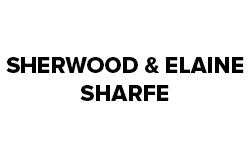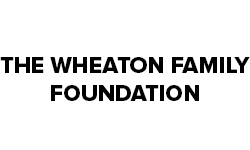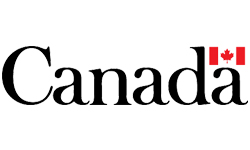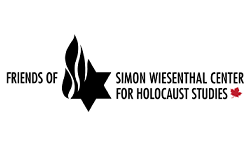GRADE 1 CITIZENSHIP STUDIES ENGAGED CITIZENS
Part A: Curricular Connections and Background
BROAD AREA OF CITIZENSHIP
Engaged Citizens question, critically examine, advocate, and defend rights and responsibilities of a democracy on multiple levels. They work to understand the issues, overt and hidden within citizenship challenges and develop appropriate action plans to address those issues.
Rules, regulations, and laws are the primary means by which society organizes and brings structure to itself. Students will consider the relationship between rights and responsibilities that bring order to society. As students examine the effects of rules and begin to appreciate the responsibilities of the governing body that developed those rules/structures, students will be conscious of the responsibility that citizens have to support and contribute to varying levels of governance.
Students will work to understand the varying impacts that rules have on people. As students strive to understand that they will also work to understand the underlying purpose behind the rule.
As engaged citizens strive to understand issues from a variety of viewpoints, they will also begin to explore processes of dispute resolution and examine and practice actions that contribute to peace and order.
Critical thinking exploration in this area of citizenship encourages students to try to understand a point of view that is different from their own.
Rules, regulations, and laws are the primary means by which society organizes and brings structure to itself. Students will consider the relationship between rights and responsibilities that bring order to society. As students examine the effects of rules and begin to appreciate the responsibilities of the governing body that developed those rules/structures, students will be conscious of the responsibility that citizens have to support and contribute to varying levels of governance.
Students will work to understand the varying impacts that rules have on people. As students strive to understand that they will also work to understand the underlying purpose behind the rule.
As engaged citizens strive to understand issues from a variety of viewpoints, they will also begin to explore processes of dispute resolution and examine and practice actions that contribute to peace and order.
Critical thinking exploration in this area of citizenship encourages students to try to understand a point of view that is different from their own.
OVERVIEW AND DESIRED RESULTS OF CITIZENSHIP STUDY
Grade 1 students will examine actions and practices that contribute to peace and order.
Students begin this process by learning about the rules that bring order to society and the governance structures that create those rules. Specifically students will examine societal actions and practices that contribute to peace and order. Rules will be examined to determine their purposes. The decision-making process will be introduced and students will begin to explore issues of responsibility and accountability that must be considered by decision makers. Students will learn how rules are made and the processes for changing rules.
Students examine the various levels of government to understand the responsibilities of different governments and understand the decision making process. They will also examine the processes for raising questions and implementing change with a variety of governmental structures.
Students will continue to learn about respect for themselves, others, and their environment. They will begin to learn to advocate for themselves and others, practice their skills of empathy, and appreciate that people have different points of view on the same topic.
An overarching goal of this year of study is for students to begin to understand the use of terminology to describe positions in space and time and the ways that maps and globes represent a variety of places and features of the earth and governance structures such as continents, countries, and provinces.
Students strive to:
Students begin this process by learning about the rules that bring order to society and the governance structures that create those rules. Specifically students will examine societal actions and practices that contribute to peace and order. Rules will be examined to determine their purposes. The decision-making process will be introduced and students will begin to explore issues of responsibility and accountability that must be considered by decision makers. Students will learn how rules are made and the processes for changing rules.
Students examine the various levels of government to understand the responsibilities of different governments and understand the decision making process. They will also examine the processes for raising questions and implementing change with a variety of governmental structures.
Students will continue to learn about respect for themselves, others, and their environment. They will begin to learn to advocate for themselves and others, practice their skills of empathy, and appreciate that people have different points of view on the same topic.
An overarching goal of this year of study is for students to begin to understand the use of terminology to describe positions in space and time and the ways that maps and globes represent a variety of places and features of the earth and governance structures such as continents, countries, and provinces.
Students strive to:
- understand and value the historical and contemporary diversity in groups;
- explore the relationships between beliefs, rights, and responsibilities on a school, community, and national level; and,
- understand the different types of governance and their responsibilities at the local and national levels.
ENDURING UNDERSTANDINGS OF CITIZENSHIP STUDY
Grade 1 students are learning about decision-making processes and exploring the rights and responsibilities associated with belonging to society.
Students learn about actions and practices that contribute to peace and order in society and the governance structures that create those rules. Rules will be examined to determine their purposes and the implications of the decision. Students will begin to understand that rule makers need to consider a variety of perspectives when making rules. Students will think about the fairness and reasonableness of rules. As students learn how rules are made, they will also learn the processes for changing rules. Students will appreciate that people can have different points of view on the same topic.
Students learn about actions and practices that contribute to peace and order in society and the governance structures that create those rules. Rules will be examined to determine their purposes and the implications of the decision. Students will begin to understand that rule makers need to consider a variety of perspectives when making rules. Students will think about the fairness and reasonableness of rules. As students learn how rules are made, they will also learn the processes for changing rules. Students will appreciate that people can have different points of view on the same topic.
- Enduring understandings are the big ideas that stimulate thinking, guide the inquiry and are linked to outcomes.
- Essential questions point to the “big ideas’ in the inquiry and should be considered and reconsidered as the inquiry progresses.
- Answers to these questions form the evidence of learning at the end of study.
Students will use information to understand that:
- Actions, behaviours, and relationships are learned and affected by the past.
- Events and ideas from the past influence the present and can influence and serve as models of how to live as a contributing citizen.
- People develop rules so that we can live together peacefully.
- Rules have differing levels of impact so people who make rules need to consider the individual good and common good.
- Diversity can have a variety of impacts and can impact points of view.
- Individuals have the power to affect others and make a difference.
- Canada has a long relationship with First Nations Peoples through treaty relationships.
- Decisions have far-reaching effects, so it is important to think about the choices we make.
- Active participation leads to belonging and symbols can support belonging.
- People are connected to each other and to their environment and have a responsibility to take care of the world.
KNOWLEDGE AND SKILL DEVELOPMENT
Students will know:
- How rules are made
- Why rules are made
- How and who enforces rules
- What “common good” means
- Simple process to solve disputes
Students will develop the ability to:
- Categorize
- Make comparisons
- Identify consequences of rules or lack of rules
- Look for alternate points of view.
ESSENTIAL QUESTIONS
- What makes a rule fair?
- Why are rules different from place to place?
- How do rules help people live peacefully together?
- How do rules change?
- How do I become an engaged citizen?
Essential Questions are open-ended questions that are continually revisited, encompass concepts that students will explore throughout the unit of study, form the evidence of understanding and frame the assessment at the end of the study.
CURRICULUM OUTCOMES AND INDICATORS
Outcomes: (Sask. Curriculum)
PA1.1
Analyze actions and practices in the family, classroom, and on the playground that support peace and harmony, including rules and decision-making processes.
Indicators:
PA1.1
Analyze actions and practices in the family, classroom, and on the playground that support peace and harmony, including rules and decision-making processes.
Indicators:
- Represent situations depicting peace and harmony in students’ daily lives.
- Describe personal actions in the family and classroom that promote peace and harmony (e.g., sharing, taking turns, using sensitive word choices).
- Describe ways in which people may influence the students’ lives at home and at school, and ways in which each student may influence the lives of others.
- Explain purposes of rules in the family and school.
- Share examples of rules in students’ families and the school.
- Participate in a variety of ways of making decisions (e.g., majority vote, consensus, individual selection and choice, autocratic).
- Describe rights and responsibilities in the classroom and playground.
- Illustrate how individual rights and responsibilities are related to a social environment of peace and harmony.
- Participate in the creation of rules for classroom tasks or activities.
PA1.2
Analyze the cause of disharmony and ways of returning to harmony.
Indicators:
- Identify decision-making approaches which may result in positive outcomes and decision-making approaches which may result in less positive results.
- Illustrate how peace and harmony are exemplified in the classroom, playground, and family.
- Gather examples of causes of disharmony in the classroom, the playground, and the family.
- Discuss examples of solutions to disharmony in the family, classroom, and the playground.
- Describe reasons for recognizing those people and events designed to work for harmony (i.e., veterans and soldiers on Remembrance Day, conflict managers in the community and school).
Overarching Outcomes and Indicators:
DR1.4
Recognize globes and maps as representations of the surface of the Earth, and distinguish land and water masses on globes and maps.
Indicators:
- Compile a list of various types of models used as representations of real things (e.g., toys, dolls, action figures, figurines, pictures, diagrams, maps).
- Identify general characteristics of maps and gloves as models of all or parts of the earth, including reasons why certain colours are used to depict particular physical features.
- Use a globe to identify the location of places of origin for items found in the classroom and school.
DR1.5
Identify and represent the orientation in space (where) and time (when) of significant places and events in the lives of students.
Indicators:
- Identify Saskatchewan as our province and Canada as our country, and give examples of other provinces and other countries.
- Locate Canada, and the relative location of Saskatchewan, on a globe.
- Locate Saskatchewan and the relative location of the community of the school on a map of Canada.
- State the address or describe the relative location of students’ homes in the community.
- Use relative terms to describe location (e.g., above, below, near, far, left, right, front, back, in, out).
- Describe the relative location of places in the classroom and school neighbourhood.
- Construct and use maps to represent familiar places, such as the location of the student’s desk, part of the classroom or playground, incorporating the cardinal directions (i.e., north, south, east, and west).
© 2024 Concentus Citizenship Education Foundation Inc. All Rights Reserved.









